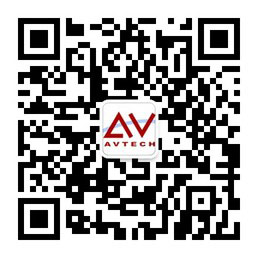当前位置:艾威培训主页 > IT认证 > VMware培训 > VCAP培训课程 > VMware vSphere:Design Workshop V5.x培训 >
VMware vSphere:Design Workshop V5.x培训
- VCAP培训课程课程目录
- VMware vSphere:Skills for Operators培训
- VMware vSphere:Optimize and Scale培训
- VMware vSphere:Design Workshop V5.x培训
- VMware vSphere:Troubleshooting V4.x培训
- VMware vSphere:Automation with vSphere PowerCLI培训
- VMware vSphere:Advanced Fast Track V4.x培训
- VMware vSphere:Automation Fast Track V4.1培训
- VMware vCenter Operations Manager:Analyze Predict
- VMware View:Design Best Practices V5.1培训
- VMware vCloud:Design Best Practices V1.5培训
- VMware vCloud:Deploy and Manage the VMware Cloud培训
- VCAP DCD考前辅导培训
- VCAP DCA认证培训
课程介绍:
该课程的目标是使参加者具备应用VMware vSphere 5设计一个虚拟基础架构的知识和能力。在组织的限制条件及要求下,在实现组织的业务目标时,基础架构应该是可用的,可扩展的,可管理的以及安全的。课程是 基于VMware ESXi? 以及VMware vCenter? Server 5.这项课程讨论了现有设计方案的好处和风险,为制定好的设计决定提供信息支持。这项课程也为参加者们通过在一个设计项目上工作提供练习设计能力的机会。
课程对象: 本课程专为负责设计 vSphere 体系结构的 VMware 售前和售后专业技术人员提供。
课程长度: 3天
最新时间:定制课程(内训),人满开班(公开课)
课程大纲:
Module 1:Course Introduction
Identify the course goals
Identify the course objectives
View the course module outline
Module 2:Design Process Overview
Clarify key terminology
Identify and discuss design guidelines, design approaches,design sessions, and design decisions and implications, andcreate a design framework
Define and describe a framework methodology
Identify design tools, including the architecture quality matrix, Information Technology Infrastructure Library v3, and the vSphere technology stack
Module 3: VMware vSphere Storage Design
Identify useful information for making design decisions about virtual and physical storage
Recognize and analyze best-practice recommendations
Analyze alternative storage design choices
Communicate choices and their benefits and risks to the customer
Develop a storage design
Module 4:VMware vSphere Network Design
Identify useful information for making design decisions about virtual and physical networks
Recognize and analyze best-practice recommendations
Analyze alternative network design choices
Communicate choices and their benefits and risks to the customer
Develop a network design
Module 5:Compute Resources Design
Identify useful information for making design decisions about host CPU and memory
Recognize and analyze best-practice recommendations
Analyze alternative host design choices
Communicate choices and their benefits and risks to the customer
Develop a host design
Module 6:Virtual Machine Design
Identify useful information for making design decisions about virtual machines
Recognize and analyze best-practice recommendations
Analyze alternative virtual machine design choices
Communicate choices and their benefits and risks to the customer
Develop a virtual machine design
Module 7:VMware vSphere Virtual Datacenter Design
Identify useful information for making design decisions about virtual datacenters regarding management server and cluster configuration
Recognize and analyze best-practice recommendations
Analyze alternative virtual datacenter design choices
Communicate choices and their benefits and risks to the customer
Develop a virtual datacenter design
Module 8:Management and Monitoring Design
Identify useful information for making design decisions about management and monitoring
Recognize and analyze best-practice recommendations
Analyze alternative management and monitoring design choices
Communicate choices and their benefits and risks to the customer
Develop a management and monitoring design
Identify the course goals
Identify the course objectives
View the course module outline
Module 2:Design Process Overview
Clarify key terminology
Identify and discuss design guidelines, design approaches,design sessions, and design decisions and implications, andcreate a design framework
Define and describe a framework methodology
Identify design tools, including the architecture quality matrix, Information Technology Infrastructure Library v3, and the vSphere technology stack
Module 3: VMware vSphere Storage Design
Identify useful information for making design decisions about virtual and physical storage
Recognize and analyze best-practice recommendations
Analyze alternative storage design choices
Communicate choices and their benefits and risks to the customer
Develop a storage design
Module 4:VMware vSphere Network Design
Identify useful information for making design decisions about virtual and physical networks
Recognize and analyze best-practice recommendations
Analyze alternative network design choices
Communicate choices and their benefits and risks to the customer
Develop a network design
Module 5:Compute Resources Design
Identify useful information for making design decisions about host CPU and memory
Recognize and analyze best-practice recommendations
Analyze alternative host design choices
Communicate choices and their benefits and risks to the customer
Develop a host design
Module 6:Virtual Machine Design
Identify useful information for making design decisions about virtual machines
Recognize and analyze best-practice recommendations
Analyze alternative virtual machine design choices
Communicate choices and their benefits and risks to the customer
Develop a virtual machine design
Module 7:VMware vSphere Virtual Datacenter Design
Identify useful information for making design decisions about virtual datacenters regarding management server and cluster configuration
Recognize and analyze best-practice recommendations
Analyze alternative virtual datacenter design choices
Communicate choices and their benefits and risks to the customer
Develop a virtual datacenter design
Module 8:Management and Monitoring Design
Identify useful information for making design decisions about management and monitoring
Recognize and analyze best-practice recommendations
Analyze alternative management and monitoring design choices
Communicate choices and their benefits and risks to the customer
Develop a management and monitoring design

